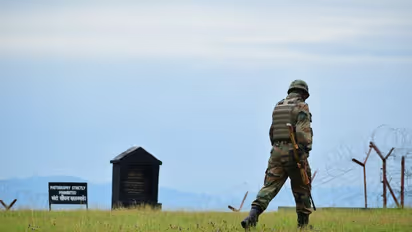Eyeing intel on Chinese movements, Indian Army allows winter grazing along LAC

Synopsis
The Indian Army is also providing security and other amenities to the shepherds.
Aiming to further strengthen its intelligence apparatus, the Indian Army is now providing villagers access to traditional winter grazing ground along the Line of Actual Control, bordering China. The Indian Army is also providing security and other amenities to the shepherds. The locals have been playing an important role in intelligence gathering for the Indian Army.
The decision comes in the backdrop of the standoff between India and China at multiple locations in eastern Ladakh since May 2020. Though disengagement has happened at several points, the de-escalation process is yet to happen. So far, the two militaries have held 13 rounds of talks to resolve the impasse.
Earlier, the Army used to desist the villagers from accessing the grazing lands. Time and again, Chushul Councillor Stanzin Konchok had raised this issue and even met Defence Minister Rajnath Singh in this regard last month.
Singh was informed as to how the nomad community is being used by the Chinese army along the Line of Actual Control to transgress. The locals of Chushul also apprised the minister that the security forces on the Indian side are restricting the shepherds to grazing lands for grazing of livestock.
In the garb of grazing livestock, the Chinese Army has been trying to dominate the areas and claim the areas as their own. An official confirmed the recent development and said that the Indian Army is helping villagers, shepherds and nomads get access to the traditional grazing lands.
About two months ago, Ladakh Autonomous Hill Development Council Chief Executive Councillor Tashi Gyalson had convened a meeting to review and find solutions with regards to restrictions imposed on shepherds to access traditional grazing lands. In reply to Stanzin’s letter, the defence ministry in April had said that the grazers have been advised to restrict their cattle movement due to the ongoing operational situation in the Ladakh region.
Also Read: China maps out new provocation; renames 15 places in Arunachal Pradesh
Also Read: Spooked by India's Rafale jets, Pakistan buys full squadron of 25 J-10C fighters from China
Stay updated with the Breaking News Today and Latest News from across India and around the world. Get real-time updates, in-depth analysis, and comprehensive coverage of India News, World News, Indian Defence News, Kerala News, and Karnataka News. From politics to current affairs, follow every major story as it unfolds. Download the Asianet News Official App to stay informed anytime, anywhere.